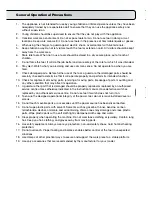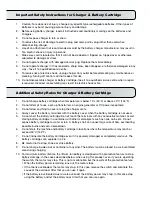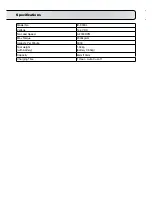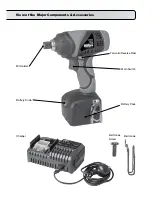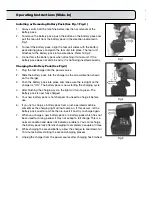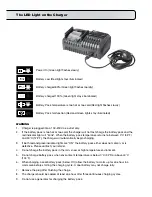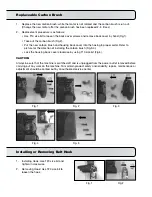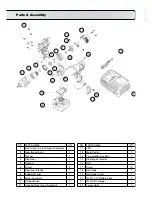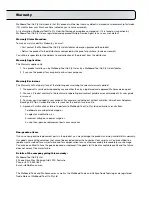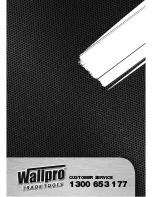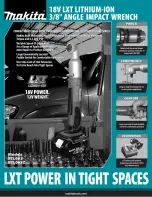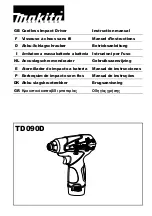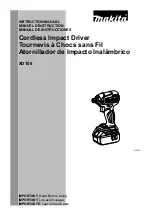
1. The appliance is not intended for use by young children or infirmed persons unless they have been
adequately trained by a responsible adult to ensure that they can use the appliance safely and
without supervision.
2. Young children should be supervised to ensure that they do not play with the appliance.
3. Consider work area environment. Do not expose tools to rain. Do not use tool in damp or wet
locations. Keep work area well lit. Do not use tools in the presence of flammable liquids or gasses.
4. When using the charger, to guard against electric shock, avoid contact with live terminals.
5. Keep children away. Do not let visitors touch the tool or extension cord. All visitors should be kept
away from the work area.
6. Store idle tools. When not in use, tools should be stored in a dry secure place, out of reach of
children.
7. Do not force the tool. It will do the job better and more safely at the rate for which it was intended.
8. Stay alert. Watch what you are doing and use common sense. Do not operate too when you are
tired.
9. Check damaged parts. Before further use of the tool, a guard or other damaged parts should be
carefully checked to determine that it will operate properly and perform its intended function.
10. Check for alignment of moving parts, jamming of moving parts, breakage of parts, mounting and
any other condition that may affect its operation.
11. A guard or other part that is damaged should be properly repaired or replaced by an authorised
service centre unless otherwise indicated in the instruction manual. Have defective switches
replaced by an authorised service centre. Do not use tool if switch does not turn it on.
12. To ensure the designed operational integrity of the power tool, do not remove installed cover or
screws.
13. Do not touch movable parts or accessories until the power source has been disconnected.
14. Do not wipe plastic parts with solvent. Solvents such as gasoline, thinner, benzine, carbon
tetrachloride, alcohol, ammonia and oil containing chloic annex may damage and crack plastic
parts. Wipe plastic parts with a soft cloth lightly dampened with soap and water.
15. Dress properly when operating the machine. Do not wear loose clothing or jewellery. Contain long
hair. Keep you hair, clothing, and gloves away from moving parts.
16. Use safety equipment. Always wear eye protection, non-skid safety shoes, hard hat and hearing
protection.
17. Do not overreach. Proper footing and balance enables better control of the tool in unexpected
situations.
18. Use clamps of other practical ways to secure and support the work piece to a stable platform.
19. Use only accessories that are recommended by the manufacturer for your model.
General Operational Precautions


